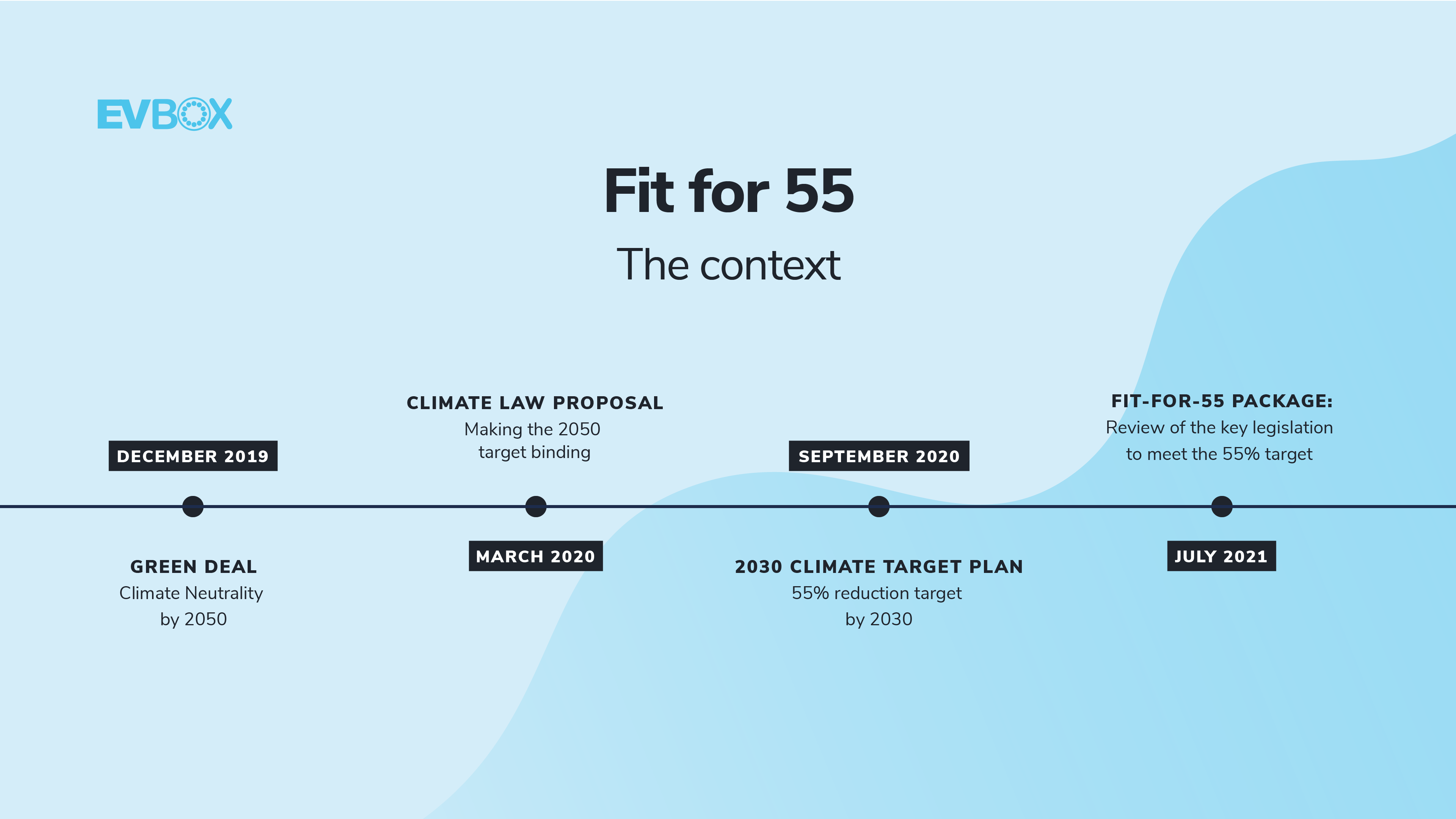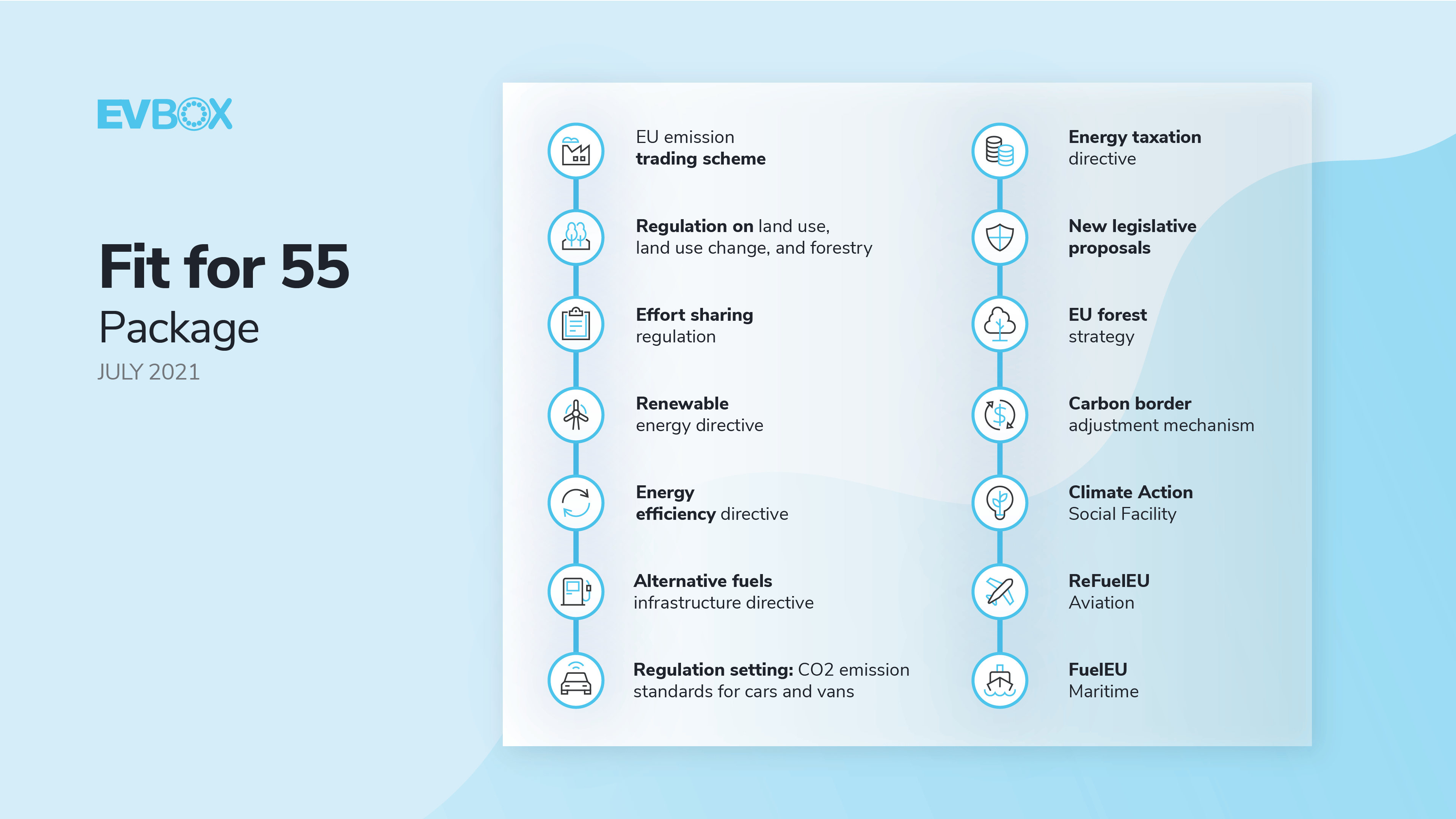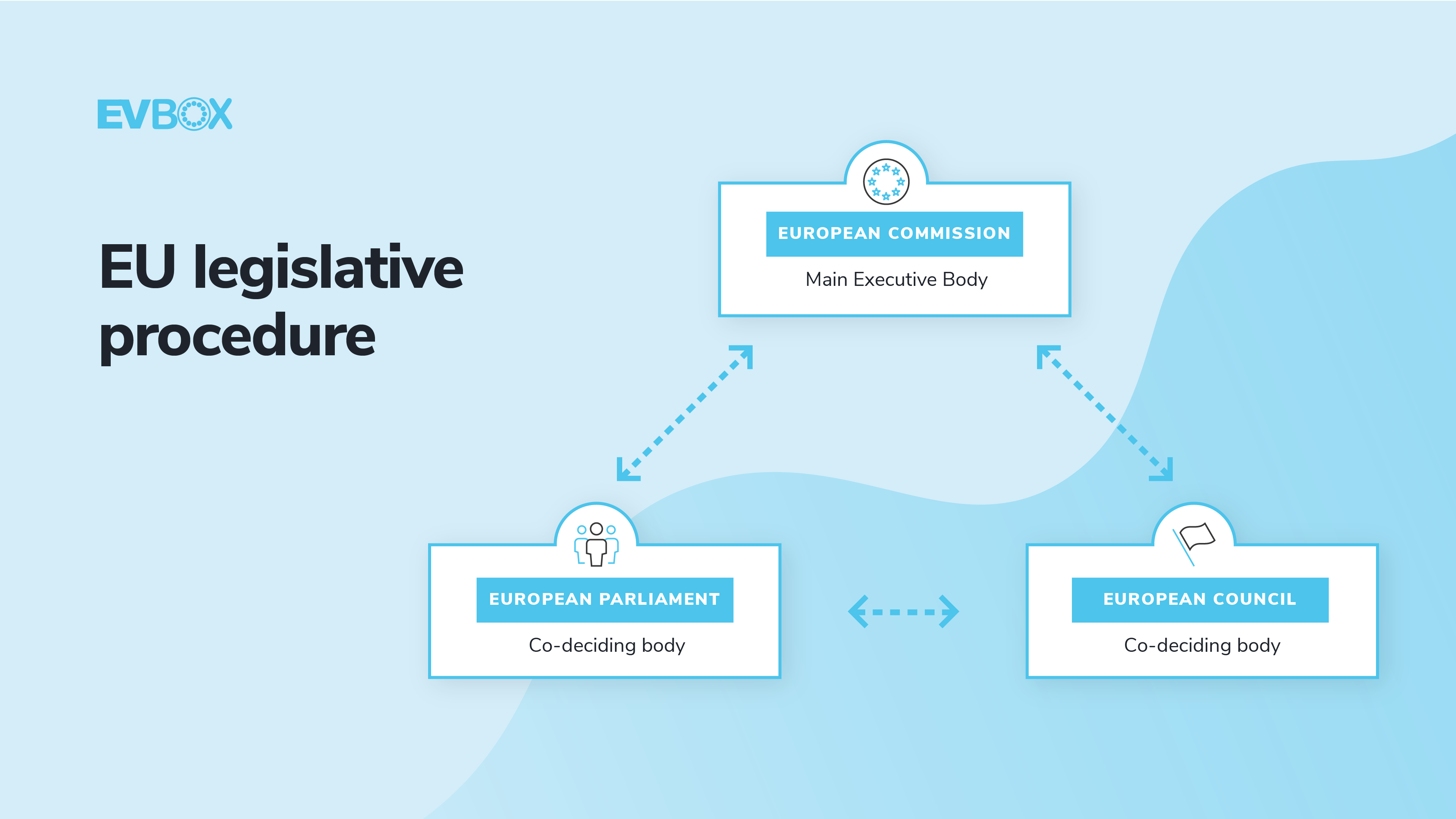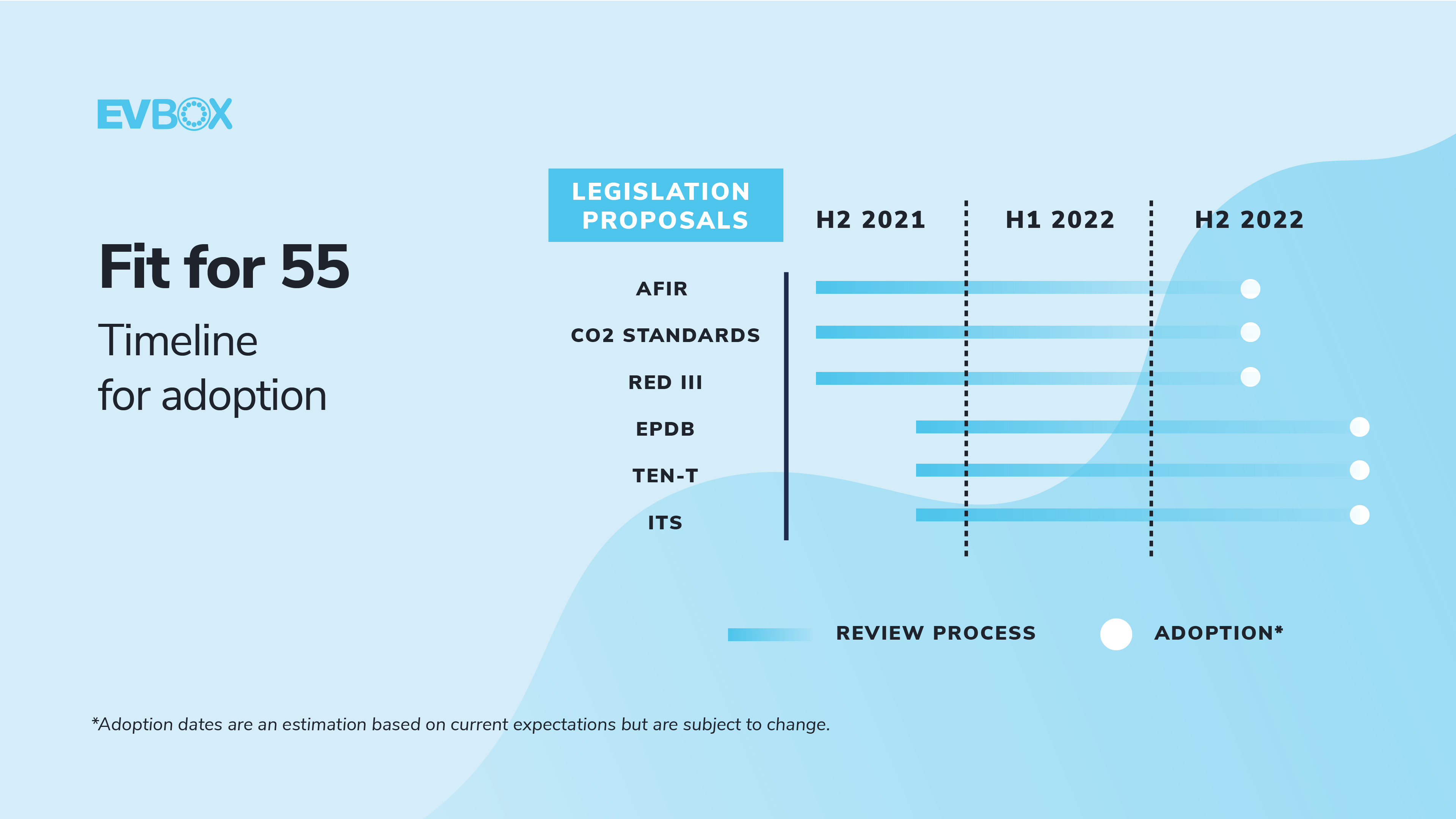European Green Deal and the Fit for 55 Package explained for EV drivers
Electric mobility is no longer a futuristic concept or a hypothetical scenario. There are already over 10 million electric vehicles (EVs) on the roads worldwide, and this number is expected to surpass 100 million within this decade. The shift toward electrification is accelerating, driven by environmental concerns, technological advancements, and policy support.
Electric cars are not just changing how we travel—they are playing a key role in the global fight against climate change. Governments around the world are increasingly prioritizing sustainability, and electric mobility has become one of the central pillars of their long-term strategies. Europe, for instance, aims to be the first climate-neutral continent by 2050, and this goal was formally outlined through the European Green Deal in 2019.
At that time, our research revealed that while 60% of people felt reducing CO2 emissions was personally important, only 10% were familiar with the European Green Deal. Since then, the landscape has evolved rapidly. New policies, regulations, and initiatives continue to shape the future of mobility, but keeping up with all the changes can be overwhelming. This article will break down the current status of the EU Green Deal, the Fit for 55 Package, and what it means for EV drivers moving forward.

Table of contents
- Climate change
- Transport emissions
- What is the European green deal?
- What is Fit for 55?
- The Fit for 55 PackageÂ
- The Fit for 55 Package and electric mobility Â
- The legislative processÂ
- What are the implications of the Fit for 55 Package for EV drivers?
Climate change
Before diving into the details of EU legislation, it's important to understand why combating climate change matters. The accumulation of greenhouse gases in the atmosphere—largely due to burning fossil fuels—is causing global temperatures to rise, leading to extreme weather events, rising sea levels, and ecosystem disruptions. By cutting emissions quickly, we can reduce the risks of irreversible damage to our planet.
Transport emissions
According to the International Energy Agency (IEA), transportation accounts for 24% of direct CO2 emissions from fuel combustion. This percentage has been increasing steadily since 2000. However, governments are taking action, implementing policies like zero-emission vehicle mandates and stricter CO2 standards. In 2019, transport emissions increased by just 0.5%, a sign that the transition to cleaner mobility is gaining momentum.
What is the European green deal?
The European Green Deal, announced in 2019, marked a historic step toward a sustainable future. Described as “Europe’s man on the moon moment†by Ursula von der Leyen, the plan sets out a vision for a climate-neutral continent by 2050. It includes binding targets, new policies, and a comprehensive strategy to reduce emissions across all sectors.
Following the announcement, we published an article explaining how the Green Deal would accelerate EV adoption and reshape transport policies. The Commission also pledged to increase the EU’s emissions reduction target for 2030, aiming to reach climate neutrality by 2050.
55 percent net emission reduction in 2030
To achieve climate neutrality by 2050, the EU needs to cut emissions by at least 55% by 2030. This ambitious target led to the creation of the Fit for 55 Package in July 2021, a set of legislative proposals designed to align EU laws with the Green Deal’s goals.
What is Fit for 55?
Think of the European Green Deal as the big picture—a roadmap to a carbon-neutral Europe by 2050. Fit for 55 is the practical step-by-step plan to make that vision a reality. It includes a series of policies aimed at reducing emissions by 55% by 2030, covering everything from energy use to transport and industry.
As Frans Timmermans, the EU Green Deal chief, said: “We have to shift the whole of our economy into a higher gear. So we are leaving no stone unturned. Fit for 55 will align our laws with our ambition.â€

The Fit for 55 PackageÂ
The Fit for 55 Package consists of two parts. The first part, published in July 2021, includes 13 legislative proposals aimed at reducing emissions. The second part is expected to be released in December 2021.
Part 1 of the Fit for 55 Package (July 2021)
Revisions to and amendments of existing EU laws
Revisions
- EU Emissions Trading System (EU ETS)
- Land Use, Land-Use Change, and Forestry Regulation (LULUCF)
- Effort Sharing Regulation (ESR)
- Energy Taxation Directive
- Alternative Fuels Infrastructure Directive (AFID)
Amendments
- Renewable Energy Directive (RED)
- Energy Efficiency Directive (EED)
- CO2 Emission Standards for Cars and Vans Regulation
New legislative proposals
- New EU Forest Strategy
- Carbon Border Adjustment Mechanism (CBAM)
- Climate Action Social Facility
- ReFuelEU Aviation – on sustainable aviation fuels
- FuelEU Maritime – on greening Europe’s maritime space

The Fit for 55 Package and electric mobility Â
The Fit for 55 Package proposes a wide range of measures to cut emissions by 2030. While these changes affect many sectors, we'll focus on how they impact electric mobility. The package emphasizes the need to decarbonize road transport, which accounts for the largest share of transport emissions.
Reducing emissions from road transport
According to the European Environment Agency, road transport is responsible for 72% of transport-related GHG emissions. To tackle this, the Fit for 55 Package promotes electric mobility as a key solution, aiming to:
- Accelerate the rollout of charging infrastructure;
- Make electric driving more accessible and convenient;
- Set a clear phase-out date for fossil fuel vehicles.
Three key pieces of legislation will drive this transformation: the Alternative Fuels Infrastructure Regulation, the Renewable Energy Directive, and the CO2 Emission Performance Standards for Cars and Vans Regulation.
Charging infrastructure
The revised Alternative Fuels Infrastructure Regulation sets binding targets for public EV charging stations. It also introduces user-friendly features to improve the experience of recharging. This ensures that drivers can easily find and use charging points across the EU.
Renewable electricity
The Renewable Energy Directive sets a target of 40% renewable energy in final consumption by 2030. It also includes smart charging requirements and incentives for using renewable electricity in transport, further supporting the growth of electric mobility.
CO2 emission standards for new vehicles
The CO2 Emission Performance Standards Regulation sets strict limits on emissions for new cars and vans. It aims to phase out internal combustion engines by 2035, with a 100% reduction in emissions for new vehicles sold after that year.
While these proposals are not yet laws, they are currently under review by the European Parliament and the Council of the European Union. Once approved, they will form the legal framework for the future of mobility in Europe.
The legislative processÂ
Before the Fit for 55 Package becomes law, it must go through the EU legislative process. The first part of the package, presented in July 2021, is currently being reviewed by the European Parliament and the Council. After discussions and possible amendments, it will be adopted as law.
 The same process will apply to the second part of the package, expected to be released in December 2021.
The same process will apply to the second part of the package, expected to be released in December 2021.
When will the Fit for 55 Package be fully implemented?
We can expect the Fit for 55 Package to be fully adopted by the end of 2022. Here's a tentative timeline of the legislative process:

What are the implications of the Fit for 55 Package for EV drivers?
Now that we've covered the bigger picture, let's look at what this means for everyday EV drivers.
Greater motivation to go electric
The clear phase-out date for internal combustion engine (ICE) vehicles gives consumers and manufacturers a clear path forward. This will encourage more people to switch to electric vehicles and push the automotive industry to invest more in electrification.
Legal framework for recharging infrastructure
The revised Alternative Fuels Infrastructure Directive now functions as a Regulation, meaning it applies uniformly across the EU. This ensures consistent rules for charging stations, making it easier for drivers to navigate the network.
Increased and better quality charging infrastructure
The package sets minimum targets for public charging infrastructure. By 2025, each country must ensure at least 1 kW of fast-charging power per BEV. This guarantees that drivers will have reliable access to charging points, even in remote areas.
A step forward in truck electrification
The package also includes targets for heavy-duty vehicles. By 2025, electric trucks should have recharging points every 60 km along highways, making long-distance travel more feasible for e-trucks.
Easier international travel
With the new rules, EV drivers can expect recharging points every 60 km on motorways, even when crossing borders. This improves connectivity and makes cross-border travel more seamless for electric car owners.

An improved user experience
The package includes measures to improve price transparency, compatibility, data sharing, and payment systems for EV users. These changes aim to make electric driving more convenient and user-friendly.
Smarter Charging
All publicly available chargers in the EU will need to be digitally connected and capable of smart charging. This will help optimize energy use and provide a more efficient charging experience for drivers.
In conclusion, as the Fit for 55 Package moves closer to implementation, electric mobility will become the norm across Europe. With government support and a shared vision for a greener future, the transition to electric vehicles is not just inevitable—it's already underway.
Automatic Fiber Laser Welding Robot
Automatic Fiber Laser Welding Robot,Fiber Laser Welding Robot,Optical Fiber Automatic Robot,3000W Fiber Laser Welding Robot
Herolaser , https://www.herolasermachine.com